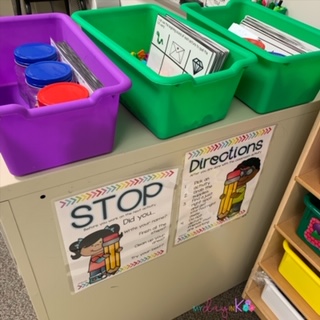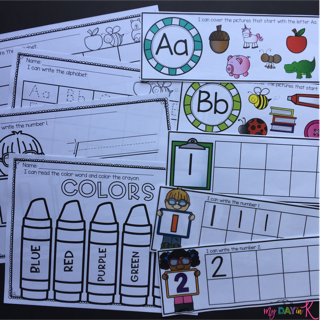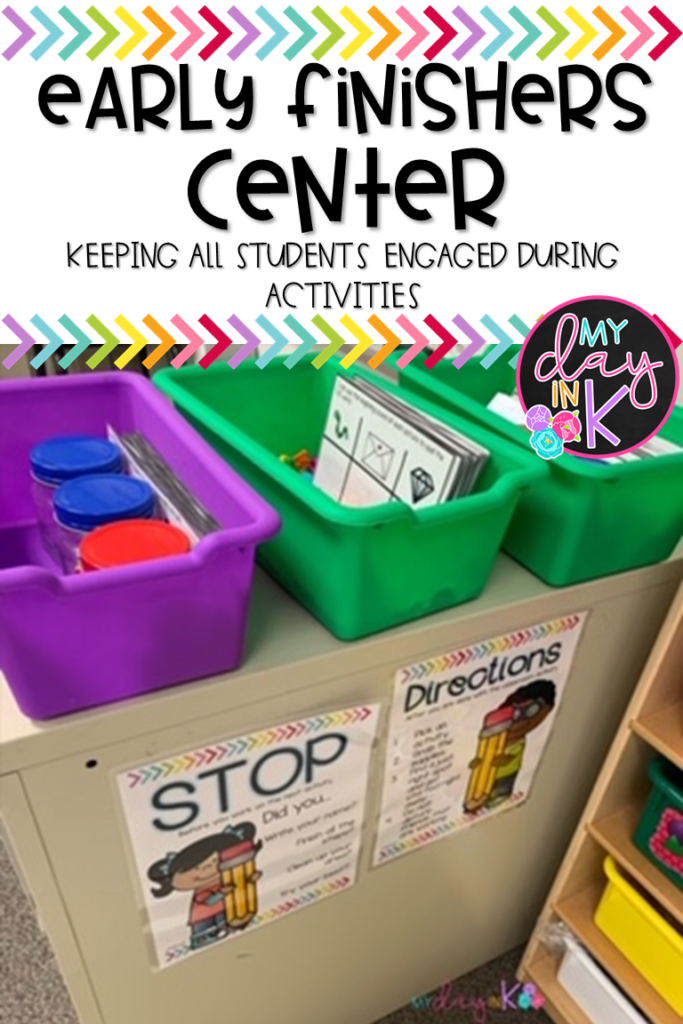“Teacher, I’m Done…Now What?!”
When you hear that phrase in your classroom does it make you twitch a little bit? I know I used to.
The classroom rhythm is such a tricky beat to stay on top of because as you start a classroom activity everyone is engaged and working, you might even take a step back and look around and think to yourself, “Wow, this is amazing!”
However, in the next moment everything can change as one student starts to finish and is now sprinting over to where you are and is shoving their paper in your face saying, “I’m done, I’m done!!” Another student is midair ready to do the same thing and you can feel yourself start to get frustrated because you are sitting with a student trying to help them, but are constantly getting interrupted.
You still have half or more of the class that is still working hard and engaged. You’re starting to panic as you quickly scramble and think about what you can have your fast finishers do that isn’t extra work, but will keep them engaged so others can finish. Your nice and calm classroom has now turned into uncontrolled chaos. Oh and on top of that, isn’t that usually when administration waltzes in just to see how Kindergarten is doing?!
Have I painted an all too familiar picture for you?! I know this is exactly how my classroom used to be and it used to stress me out. I felt bad for the students who were done early, because I felt like I was giving them “busy work” just to have them back in their seats and quiet and I also felt bad for the rest of my class who needed my attention, but I was constantly getting interrupted with students wanting to show me their work.
It wasn’t until I started an Early Finisher Center that I felt like I regained the control I had lost during classroom activities. The stress of thinking about what to have my early finishers do was gone!
What is an Early Finisher Center?
It’s an area in your classroom designated for students who are done early, but the rest of the class is not ready to move on.
It’s an area that has different activities for students to work on so they are actively engaged and working on a variety of skills.
It’s an area that allows you to focus on the rest of the class who is working on the classroom activity and may or may not need your help.
Simply put, for me, it was a sanity saver!

You can introduce your early finisher center whenever you feel like your class is ready for it. I like to do it during the middle of September or end of September depending on my class.
I usually have one bin for math, literacy, and then a writing activity. I like to change the activities monthly to keep them fresh. The math and literacy activities are hands on where students use mini erasers or dry erase markers to complete. I put all the supplies the students need in the bin and once I establish the routine my students know they can grab a bin and find a just right spot in the room and get started. Then as other students finish they can quietly join them or choose a different bin. It does take some groundwork to establish the expectations and routines, but once that has been done, it really is an amazing area.

For my classroom, it works best if I have my students leave whatever the classroom activity is at their seat. Then as I am walking around and helping others I can look at it. If they need to come back and edit or change something then I call them over. This also helps because students are no longer walking up to me to show me their work and I am not getting interrupted with the student I am working with.
If you are interested you can click the link April I’m Done Now What Sample Edition to try some of the April Early Finisher Activities I have created and use in my Early Finishers Center.
If you like that you might also like my Early Finishers Year Long Bundle!

I hope this helps to give you some ideas of what to do when students finish activities at different speeds. An Early Finisher Center has really helped me regain control and have the opportunity to focus on all my students. I also love how my students are no longer doing “busy work” and are actively engaged until we are ready to move on to our next classroom activity.

